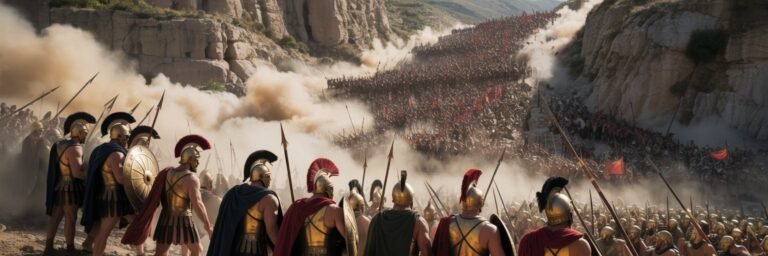INTRODUCTION
Delving into the annals of history feels like venturing onto a time machine, especially when exploring the ancient architecture, art, and cultures that flourished millennia ago. These early human accomplishments are captivating not only for their intrinsic beauty and creativity but also for their profound impact on civilizations, serving as wellsprings for later sociocultural, political, and architectural innovations.
From the pyramidal structures of Egypt to the intricate arts of Mesopotamia and the grandiose stone masonries of the Maya, ancient architectural and artistic endeavors narrate a tale of collective human innovation, ingenuity, and cultural emergence – a testament of our timeless yearning for expression, survival, and transcendence.
HISTORICAL BACKGROUND
In understanding the emergence of ancient architecture, several civilizations hold pivotal significance. The Neolithic site of Çatalhöyük, in modern-day Turkey (7500-5700 BCE), is one of the earliest known architectural settlements revealing organized town planning. Around this period, in the fertile crescent of Mesopotamia—often labelled as the cradle of civilization—mud-brick houses and religious structures, or Ziggurats, began to emerge. The Great Ziggurat of Ur (constructed c. 2100 BCE under King Ur-Nammu) bears testimony to this.
Around the same time, the ancient Egyptians were developing a cogent architectural aesthetic, culminating in the pyramids (c. 2630–2611 BCE)— brilliantly configured to adhere to astrological alignments. Simultaneously, the Indus Valley civilization (3300–1300 BCE) showcased urban grid planning and sophisticated sanitary systems in Mohenjo-Daro and Harappa.
By the 1st millennium BCE, Greek and Roman architecture was flourishing, with creations like the Parthenon (447-432 BCE), and the Colosseum (c. 72-80 CE) etching a perpetual influence on Western architecture.
THEORIES AND INTERPRETATIONS
The interpretations of these ancient architectural marvels vary broadly. Some historians and archaeologists like Mark Lehner and Zahi Hawass, specializing in Giza pyramids, primarily view them as tombs for the pharaohs, elaborating on the idea of ensuring their divinity in the afterlife. However, alternative thinkers, like Robert Bauval, propose the Orion Correlation Theory—asserting that the pyramids’ configuration aligns with the Orion’s Belt stars.
Also, the Greek Parthenon, traditionally viewed as a dedicated temple to Athena, has been reinterpreted by Joan Breton Connelly as a monument commemorating a particular mythical event—the birth of the divine Athenian King Erechtheus.
MYSTERIES AND CONTROVERSIES
While their historical significance is indisputable, several ancient architectures are shrouded in mysteries and controversies. The construction techniques of the Pyramids of Egypt still elicit wide-ranging debates. Conventional archaeologist theories propose they were built using an extensive labor workforce and intricate ramp systems. On the other hand, fringe theories, including those proposed by Graham Hancock, suggest that a long-lost ancient civilization or even extraterrestrial beings might have lent a hand!
In the Indus Valley, the civilization’s demise and the Harappan scripts remain unresolved puzzles, prompting debates on Aryan invasion theories and Dravidian origins.
Additionally, the Nasca lines in Peru, gigantic geoglyphs created between 500 BCE and 500 CE, have elicited endless speculations—from ritual pathways, astronomical alignments, to alien landing marks!
SYMBOLISM AND CULTURAL SIGNIFICANCE
Each structure from antiquity bears profound cultural implications, revealing the spiritual, political, and social fabric of their respective cultures. For instance, the Ziggurats of Mesopotamia, like the Gate of Ishtar (constructed c. 575 BCE), symbolized the supremacy of patron gods and kings, upholding religious authority.
Egyptian pyramids were portraits of pharaonic power and afterlife beliefs. The ancient Greek and Roman structures, such as the Pantheon (113-125 CE), embodied political power, religious reverence, and an aesthetic understanding of balance, rhythm, and symmetry—an ethos echoed in Vitruvius’s architectural treatise, De architectura.
MODERN INVESTIGATIONS
Modern technology has transformed our understanding of ancient architectural and artistic endeavors. From LiDAR, revealing hidden Mayan cities beneath the jungle canopies of Central America, to ground-penetrating radar and CT scanning aiding in potentially finding hidden chambers in King Tutankhamen’s tomb and the pyramids.
Led by Sarah Parcak, Space Archaeology, employing satellite imaging for archaeological investigations, has uncovered several ancient sites globally, further enriching the historical narrative.
LEGACY AND CONCLUSION
These architectural marvels of antiquity hold an indelible legacy. They became the cornerstone for later cultural innovations, inspiring Gothic Cathedrals, Renaissance palaces, and modern skyscrapers alike.
For instance, the Greek Doric, Ionic, and Corinthian column orders continue to inspire modern architecture, as seen in the U.S Capitol and countless other structures.
However, their legacy is not limited to architecture. They stand as boundless fountains of human resilience, creativity, and innovation, echoing a sense of shared humanity, transcending temporal and cultural boundaries. These timeless objects of admiration remind us of the intrinsic human capability to imagine and create, building bridges between the past, present, and an envisioned future.
Thus, in exploring the architectural wonders of the past, we discover more than just a historical narrative. We witness the unfolding of humanity’s collective search for order, meaning, and a profound understanding of our place within the cosmos. As we continue to explore these architectural relics, unraveling their myriad mysteries, we shape narratives for future generations, stoking a beacon of collective human achievement in our continual quest for understanding and expression.






